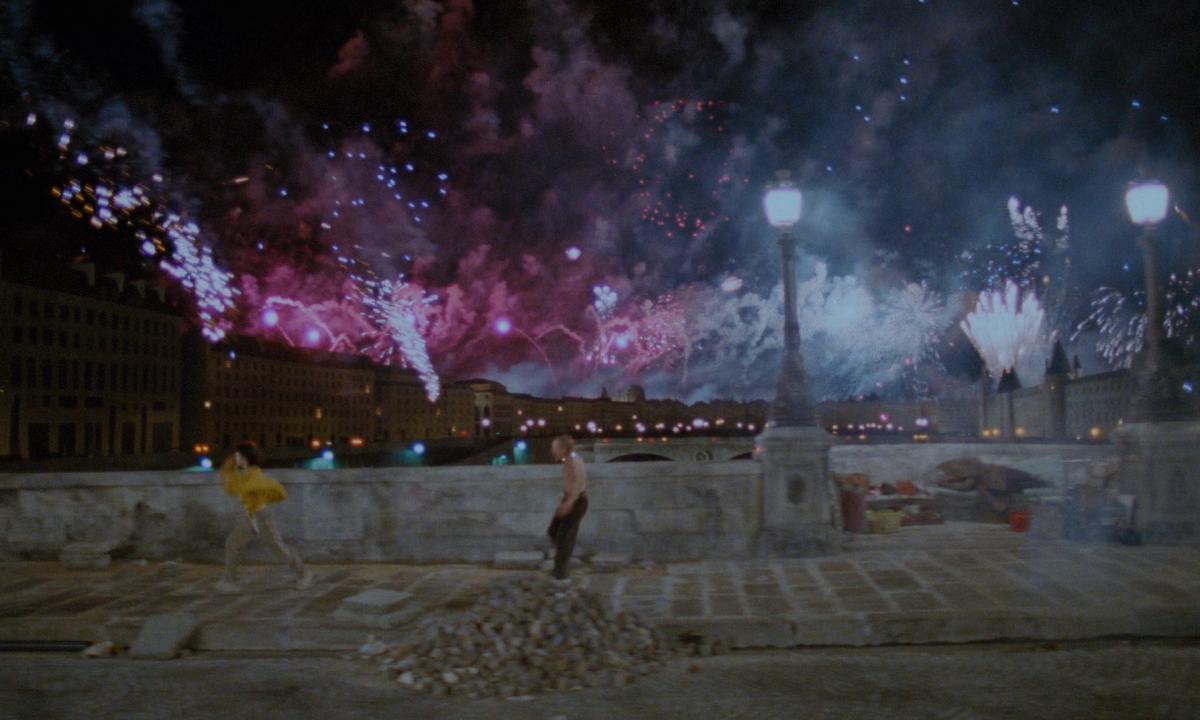Carax’s Macabre Luxury
The Lovers on the Bridge (1991)

Leos Carax’s third film became a perilous super-production with a gigantic set – the entire Pont Neuf was rebuilt in the south of France! For years, the project was passed from one producer to another, from one bankruptcy to the next. But the magic of Carax’s laboriously collected scenes together was great enough to convince others every time. What kind of film is able to push through against so many headwinds? How did Carax convince the next financier?
As we step outside, we look at each other. We don’t say a thing. What is behind us, is so very alienating. Then I exhale and say that I feel so exhausted. And she agrees. A little later, she adds that everything stayed so cold. And relieved I summarise: did you find that too, that everything left you indifferent and yet you are exhausted?
In fact, The Lovers on the Bridge feels cynical and opportunistic. There is hardly an enthusiastic image to be found, certainly no generous images, but instead all the more self-conscious, vain, narcissistic images. Light, frame and camerawork are so self-conscious, so emphatic that they, like a sadistic design, outdo the actors and terrorise the spectators at the same time. The characters do not “get” a place in the picture – it is imposed on them. The spectator does not get to see characters, only images obscuring the view like an aesthetic fog. I do realise this is an unfair accusation. I know that the kind of images that were made by Renoir, later by Rossellini, and even later by Godard and Rohmer, can no longer be made today, not even by Wenders. I am talking about those generous images that are detached from their characters, as it were, giving them a visual and spatial “freedom”. To make those kinds of images, however, the director has to believe in the richness and potential of his character. He has to believe that his creation also has its own autonomy. (You can still see that in Fassbinder and Cassavetes.) That was the criterion of “modern” film. And that has disappeared. Carax especially doesn’t “believe” in his characters in that way; he uses them as a tool – just look at the film’s bizarre final denouement, where they become the figureheads of a river-vessel. Carax’s characters are not the object of interest, study and attention. This lack of interest is also evident cinematically. In his otherwise efficient travelling shots, for instance, Carax does not tune the camera to the movements of his characters.
Torn Foot
Right away, we find ourselves in the sadistic heart of The Lovers on the Bridge. Mutilations and scars are essential to the physical appearance of Binoche and Lavant, essential to the story, essential to the painful sensations intended for the viewer. The film opens with a horrifying little traffic accident: you hear how Lavant’s foot is torn open in a collision. You later see the black hole that Lavant peels open and where Binoche’s eye is supposed to be. This macabre dimension culminates at the beginning of the film in a documentary sequence about Parisian clochards. Carax filmed like a clinical yet sensationalist cameraman: never interested in what was happening in front of the camera but only in the impact it would have on screen.
Besides the macabre, there is luxury: the hyper-production, the mannered image, the baroque fairylike. Carax does try to fit the two together – clinical decay and magical image construction, macabre corruption and pièces montées [layer cakes] of light and fireworks – but it doesn’t really work. The suture doesn’t happen. Two different films chase each other, trip over one another, tear each other apart like two dogs on the same leash.
It is precisely this elegance draped around decay, this emphatic construction around mute, jaded, restless and uninteresting characters, this charm with which the radically shocking is told, that make the film so exhausting, and so meaningful for our time. It has the power of castrated expressionism. This flamboyant-looking film knows what exaggeration is, but not kitsch; it is supremely self-aware and terribly naive, breathtakingly young and at the same time oldishly predictable.
These are all descriptions of the central point: Carax’s cinematic cynicism. This word – cynicism – is only an observation, not a condemnation. After all, we live under the triumphant rule of means – not only in the film world.
Image from Les amants du Pont-Neuf (Leos Carax, 1991)
This text originally appeared in Kunst & Cultuur 24, October 1991.
Many thanks to Reinhilde Weyns and Bart Meuleman
With support from LUCA School of Arts, LUCA.breakoutproject

